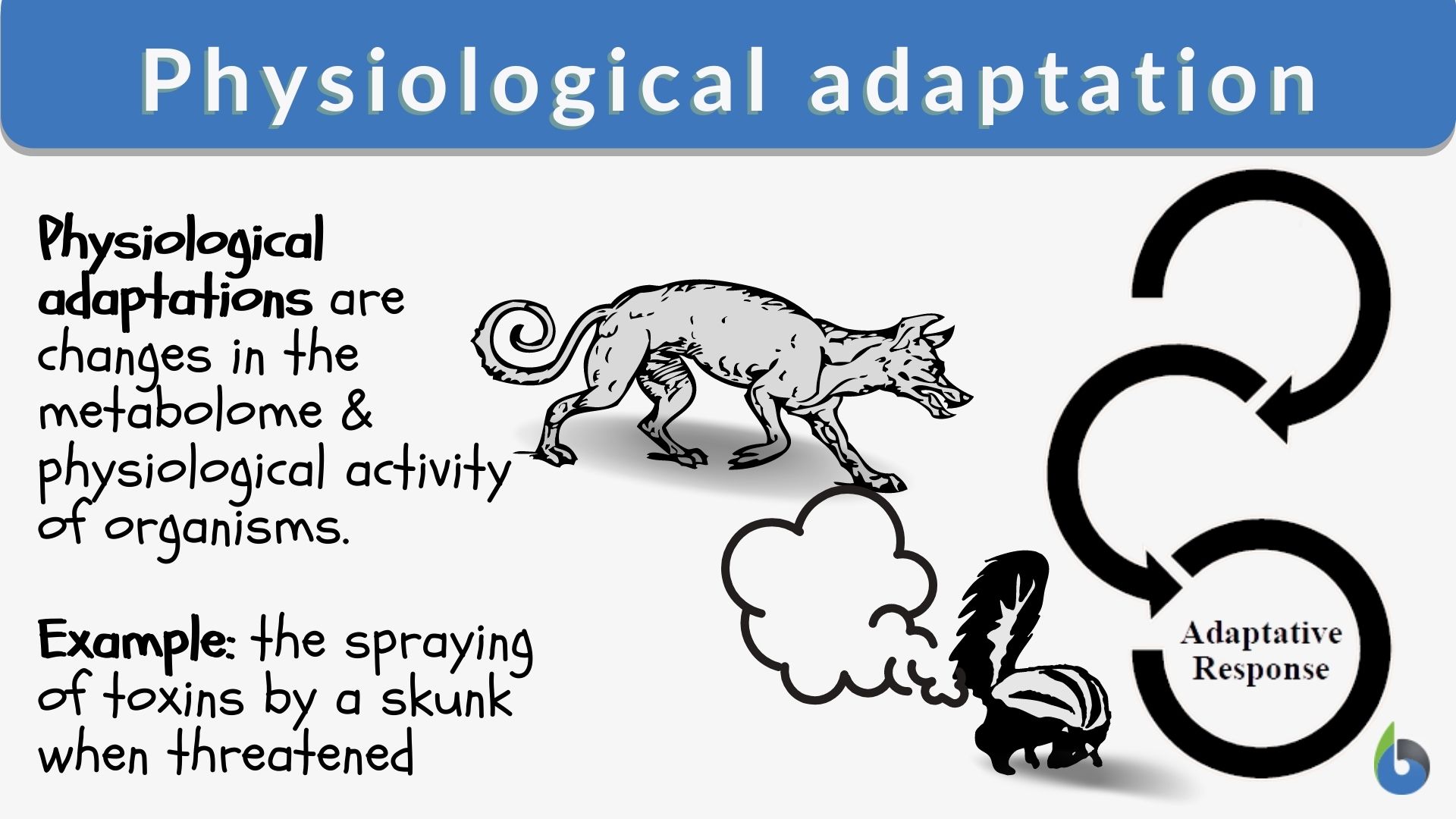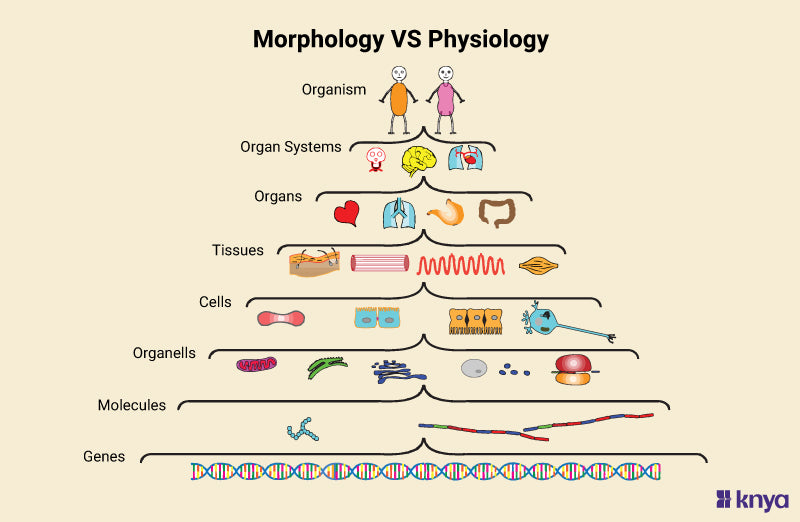Understanding the Difference Between Structural and Physiological Adaptations: Key Highlights and Examples

Adaptations are vital for the survival of species in varying environments, and they can be broadly categorized into structural and physiological adaptations. Structural adaptations refer to the physical features of an organism that enhance its survival, while physiological adaptations involve internal processes that support metabolic needs and responses to environmental changes. Understanding these two types of adaptations is crucial for appreciating how organisms evolve and thrive in their habitats. This article explores the key highlights of structural and physiological adaptations, providing clear examples to illustrate their significance in the natural world and the mechanisms that drive evolutionary success.
- Understanding the Difference Between Structural and Physiological Adaptations
- What is an example of physiological adaptation?
- What are 5 examples of structural adaptations?
- What is the difference between physiological and morphological adaptations?
- What is the difference between a physical adaptation and a psychological adaptation?
- Questions from Our Readers
Understanding the Difference Between Structural and Physiological Adaptations
Structural and physiological adaptations are two primary categories of adaptations that organisms use to survive in their environments. Structural adaptations are physical features of an organism, such as body shape, color, and size, that enhance its ability to thrive in specific habitats. For example, the long neck of a giraffe enables it to reach higher vegetation that other animals cannot access. On the other hand, physiological adaptations refer to internal processes and functions that allow organisms to regulate their biological systems. An example of this is how certain animals, like kangaroo rats, minimize water loss through highly efficient kidney function and concentrated urine. Both adaptation types are crucial for the survival and reproduction of species in diverse ecosystems.
Definition of Structural Adaptations
Structural adaptations are the physical characteristics of an organism that help it better survive in its environment. These can include variations in size, shape, color, and even the presence of specialized body parts like claws or fins. For instance, the thick fur of polar bears provides insulation against cold temperatures, which is essential for their life in arctic habitats. These adaptations are often the result of long-term evolutionary processes where certain traits become favorable over generations.
Definition of Physiological Adaptations
Physiological adaptations are the internal bodily processes that enable an organism to maintain homeostasis and respond to environmental changes. This can involve changes in metabolism, biochemical pathways, or developmental processes. For example, some reptiles can alter their metabolism to survive in extreme temperatures by entering a state of brumation, a hibernation-like state that decreases their energy consumption during unfavorable conditions.
Examples of Structural Adaptations
Examples of structural adaptations can be seen across various species. The streamlined body shape of dolphins allows them to move swiftly through water, reducing drag and enhancing swimming efficiency. Similarly, plant species in arid conditions often develop thick, waxy leaves that minimize water loss. These physical modifications illustrate how organisms can evolve to better fit their habitats.
Examples of Physiological Adaptations
Physiological adaptations involve internal mechanisms that help organisms adapt to environmental strains. For example, the ability of some fish to osmoregulate helps them balance salt and water levels in both freshwater and marine environments. Additionally, the desert fox has evolved to have a unique heat regulation system, allowing it to withstand extreme heat while preventing dehydration.
Comparing the Two Types of Adaptations
While both structural and physiological adaptations facilitate survival, they function in different ways. Structural adaptations are often visible and directly connected to the physical environment, while physiological adaptations typically involve complex internal processes that may not be immediately apparent. For instance, a plant's thick bark may serve as a structural defense against herbivores, while its ability to produce toxins is a physiological adaptation designed to deter feeding at a biochemical level.
| Adaptation Type | Description | Examples |
|---|---|---|
| Structural | Physical features that aid survival | Long neck of a giraffe, thick fur of polar bears |
| Physiological | Internal processes that support survival | Water conservation in kangaroo rats, metabolic changes in reptiles |
What is an example of physiological adaptation?

An example of physiological adaptation is the ability of certain mammals, like camels, to survive in extreme desert environments. Camels have developed various physiological traits that enable them to conserve water and maintain their body temperature despite the heat. They can withstand high temperatures during the day and can go for long periods without water. These adaptations include specialized kidneys that filter waste while retaining water and the ability to tolerate dehydration levels that would be fatal to other animals.
Water Conservation Mechanisms
Camels possess specialized kidneys that are highly efficient at filtering and conserving water. Their urine is extremely concentrated, which minimizes water loss. Additionally, they can tolerate fluctuations in body temperature, which allows them to avoid sweating during the day when temperatures soar. As a result, they can maintain hydration over extended periods, even in arid conditions.
- Concentrated Urine: Their kidneys maximize water recovery.
- Temperature Regulation: They can tolerate high body temperatures without sweating.
- Dehydration Tolerance: They can lose a significant percentage of body weight through water loss without harmful effects.
Fat Storage Adaptations
Camels have a unique adaptation in which they store fat in their humps. This fat can be metabolized into water and energy when needed. This adaptation allows them to have a reservoir of energy in nutrient-poor environments, enabling long-distance travel without food intake. This fat provides not only energy but also allows for some water production through metabolic processes.
- Energy Source: Stored fat can be converted to energy.
- Water Production: Metabolism of fat produces water, aiding hydration.
- Mobility: Humps enable camels to travel long distances efficiently.
Body Temperature Regulation
Camels can vary their body temperature throughout the day, minimizing the need to sweat and thus conserving water. By allowing their body temperature to rise during the hot day and lowering it at night, they significantly reduce water loss. This physiological flexibility is crucial for survival in their harsh habitat.
- Daily Temperature Variation: Body temperature can increase to avoid sweating.
- Energy Efficiency: Temperature control reduces energy demands during heat.
- Survival Strategy: Helps them cope with extreme heat while conserving water.
Unique Blood Composition
Camels have a unique blood composition that includes special adaptations in their red blood cells. Their red blood cells are oval rather than round, which helps them to remain flexible and flow easily even when dehydrated. This allows for efficient oxygen transport, critical during periods of stress or in high temperatures.
- Oval Red Blood Cells: Increased flexibility in dehydrated states.
- Oxygen Transport: Enhanced ability to deliver oxygen under stress.
- Adaptability: Supports survival in a hot, arid environment.
Behavioral Physiological Interactions
In addition to physiological adaptations, camels exhibit behavioral adaptations that support their physiological traits. They are known for their ability to rest during the hottest parts of the day and are active during cooler morning and evening hours. This behavior reduces heat exposure and conserves energy.
- Activity Patterns: Nocturnal and crepuscular behavior minimizes heat stress.
- Resting Behavior: Reduces energy expenditure during peak heat.
- Group Behavior: Social structures can provide shade and support during the day.
What are 5 examples of structural adaptations?


1. Camouflage in Animals
Camouflage is one of the most fascinating structural adaptations that allows animals to blend into their surroundings, thereby enhancing their chances of survival. This adaptation can help them evade predators or ambush prey. Animals such as the chameleon, stick insect, and various species of flounder utilize this remarkable adaptation in the following ways:
- Color changes in skin or scales to match the environment.
- Body shapes that mimic leaves, branches, or other elements of their habitat.
- Seasonal changes in coloration to adapt to different environments.
Advantages of Camouflage
The advantages of camouflage can significantly impact an organism's survival and reproductive success. This structural adaptation provides several benefits:
- Increased chances of avoiding predators, leading to higher survival rates.
- Improved hunting efficiency for predators, allowing for more successful catches.
- Enhanced ability to reproduce, as more individuals reach reproductive age.
2. Long Neck of Giraffes
The long neck of the giraffe is a classic example of structural adaptation, primarily developed for feeding. This adaptation allows giraffes to reach leaves and foliage that are high up in trees, which many other herbivores cannot access.
- Access to a niche food source that reduces competition.
- Ability to spot potential predators from a distance.
- Facilitates thermoregulation due to decreased surface area in relation to volume.
Ecological Impact of Giraffe Necks
The long neck of giraffes has significant ecological impacts as it influences the dynamics of their environment. The way they feed and their height affects:
- Plant growth patterns by favoring certain species of trees that are targeted for grazing.
- The distribution of other herbivores, as giraffes can monopolize food sources.
- The structure of ecosystems by allowing diverse plant communities to thrive at different heights.
3. Webs of Spiders
The intricate webs created by spiders serve as a structural adaptation that plays a crucial role in their survival. These webs are not only homes but also effective tools for capturing prey.
- Utilization of silk that is both elastic and strong to create effective trapping mechanisms.
- Varied web designs to attract different types of prey.
- An ability to regenerate silk after it has been damaged or used.
Types of Spider Webs
Spiders create a variety of web types, each tailored to their specific hunting strategies and environments. Understanding these types reveals the versatility of this adaptation:
- Orb webs, which are usually large and round, designed for catching flying insects.
- Sheet webs, allowing for trapping insects that fall onto the surface.
- Tangle webs, which ensnare prey in an irregular, messy formation.
4. Thorns on Plants
Thorns are another exceptional structural adaptation primarily found in plants to deter herbivores. These sharp protrusions serve the purpose of protecting plants from being eaten.
- Thorns can deter larger herbivores, reducing damage to the plant.
- They serve as a physical barrier that alters the behavior of grazing animals.
- Some thorns can also house beneficial insects that can help protect the plant.
Benefits of Thorn Adaptation
The presence of thorns on plants provides numerous ecological advantages, which can influence plant health and habitat dynamics:
- Improved survival rates for thorny plants in competitive environments.
- Increased biodiversity, as plants with thorns attract specific insects.
- Potential for co-evolution between plants and herbivores.
5. Fins in Fish
Fins are a vital structural adaptation that allows fish to navigate through water efficiently. These adaptations enable them to swim, steer, and maintain balance in various aquatic environments.
- Different shapes and sizes of fins contribute to different swimming techniques.
- Some fins are adapted for short bursts of speed, while others are designed for maneuverability.
- Fins also assist with vertical positioning in the water column.
Diversity of Fish Fins
The diversity of fin types reflects the various ecological niches fish occupy, leading to broad adaptability:
- Rigid fins for stability in fast-moving water bodies.
- Flexible fins for agile movements in complex habitats.
- Modified fins that serve other functions like mating displays or camouflage.
What is the difference between physiological and morphological adaptations?

The primary distinction between physiological and morphological adaptations lies in the nature of the changes that organisms undergo to enhance their survival and reproduction in specific environments.
Physiological adaptations refer to the internal processes and functions that enable an organism to respond to environmental challenges. These adaptations involve biochemical, biochemical, or hormonal changes that increase the organism's fitness. For example, the regulation of body temperature, metabolic adjustments, and the ability to produce certain enzymes are all physiological adaptations that can improve an organism's efficiency in utilizing resources or coping with stressors.
On the other hand, morphological adaptations involve changes in the physical structure and appearance of an organism. These adaptations are often observable characteristics that help organisms thrive in their habitats. For instance, the shape of a bird's beak can be a morphological adaptation that allows it to access specific food sources, or the thicker fur of animals in cold climates can be a morphological response to the need for insulation.
Physiological Adaptations
Physiological adaptations are vital mechanisms that enhance an organism's functioning in response to environmental challenges. These adaptations can occur at various levels of organization within an organism, facilitating survival in diverse conditions.
See also:
- Temperature Regulation: Many organisms exhibit physiological adaptations to maintain their body temperature. For instance, mammals can regulate their temperature through sweating or shivering.
- Metabolic Adjustments: Some species can shift their metabolic processes to conserve energy during periods of scarcity or stress, like hibernation in bears.
- Water Balance: In arid environments, physiological modifications like water retention mechanisms help organisms survive with limited water availability.
Morphological Adaptations
Morphological adaptations pertain to the structural features of organisms that facilitate their survival and reproductive success in particular environments. These changes manifest as alterations in size, shape, or coloration.
- Body Shape: The streamlined bodies of fish reduce resistance in water, aiding in efficient swimming.
- Coloration: Many animals exhibit specific color patterns, which can provide camouflage, thus decreasing predation risks.
- Appendage Modifications: For example, the long neck of the giraffe is a morphological adaptation that allows it to reach high foliage for feeding.
Examples of Physiological Adaptations
Different habitats necessitate specific physiological adaptations in organisms to thrive in varied ecological conditions. The following examples illustrate these adaptations across species.
- Desert Dwellers: Kangaroo rats have intricate kidneys that minimize water loss by concentrating their urine.
- High Altitude Adaptations: Humans and animals living at high altitudes have adapted by increasing red blood cell production to improve oxygen transport.
- Cold-Weather Species: Polar bears have a thick layer of blubber and dense fur that function as insulation against harsh temperatures.
Examples of Morphological Adaptations
Morphological adaptations can be readily observed in the structure and form of organisms, providing excellent examples of evolution in action. The following cases illustrate how form correlates with function in the natural world.
- Plant Structures: Cacti possess thick, waxy skin and spines instead of leaves, which minimizes water loss and deters herbivores.
- Insect Mouthparts: Different insects have developed specialized mouthparts to exploit various food sources, like the proboscis of butterflies for nectar feeding.
- Flight Adaptations: Birds exhibit different wing shapes based on their flying needs; for example, hawks have broad wings for soaring, while hummingbirds have short, agile wings for maneuverability.
Functional Roles of Physiological vs. Morphological Adaptations
Both physiological and morphological adaptations fulfill distinct yet complementary roles in the life of organisms, enhancing their fitness and ability to thrive in their ecosystems.
- Immediate Response: Physiological adaptations often elicit immediate responses allowing organisms to cope with short-term changes, like reacting to extreme temperatures.
- Long-term Survival: Morphological adaptations typically evolve over longer periods and assist organisms in long-term survival and reproductive success by optimizing body structures.
- Interaction with Environment: Each type of adaptation influences how an organism interacts with its environment, impacting behaviors, feeding strategies, and predator-prey dynamics.
What is the difference between a physical adaptation and a psychological adaptation?

The difference between a physical adaptation and a psychological adaptation lies in the nature of the changes that organisms undergo to survive and thrive in their environments. Both types of adaptation are essential for the survival of species; however, they operate in distinct ways.
Definition of Physical Adaptation
Physical adaptations are changes in the structure or function of an organism's body that enhance its ability to survive in a specific environment. These adaptations can be the result of evolutionary processes and may include:
- Coloration: Camouflage or warning colors that help organisms avoid predators or attract mates.
- Body Shape: Streamlined bodies in aquatic animals to reduce drag and improve swimming efficiency.
- Physiological Mechanisms: Internal adjustments, like the ability of some animals to store fat to survive in colder climates.
Definition of Psychological Adaptation
Psychological adaptations refer to changes in an organism's behavior, cognition, and emotional responses that allow it to better cope with its environment. These adaptations are often learned and can vary widely across individuals depending on their experiences and contexts. Key aspects include:
- Behavioral Modifications: Tactics used by animals or humans to navigate social interactions, like forming alliances or territorial behaviors.
- Coping Mechanisms: Strategies developed to manage stress or anxiety, such as seeking social support or engaging in problem-solving.
- Learning and Memory: Enhancements in intelligence or the ability to learn from past experiences to make better decisions in the future.
Examples of Physical Adaptations
Physical adaptations are often observable traits that influence an organism's survival and reproductive success. They can be categorized into various forms, such as:
- Beak Shape: Birds may have different beak shapes suited for extracting different types of food, showcasing evolutionary specialization.
- Fur Thickness: Mammals in cold environments typically have thicker fur for better insulation against the cold.
- Limbs Adaptation: Some animals have evolved specialized limbs for climbing, swimming, or digging, depending on their habitats.
Examples of Psychological Adaptations
Psychological adaptations often manifest as learned behaviors that help organisms adjust to their environments. Some significant examples are:
- Resilience: The capacity to recover from hardship or trauma, allowing individuals to adapt positively in adverse situations.
- Social Intelligence: The ability to navigate complex social systems through understanding social cues and maintaining relationships.
- Adaptive Risk-Taking: The willingness to take calculated risks that lead to new opportunities, essential for survival in changing environments.
The Impact of Environment on Adaptations
Both physical and psychological adaptations are strongly influenced by environmental factors. The relationship between an organism and its environment is dynamic and can be broken down into:
- Natural Selection: The process by which favorable traits become more common in a population, shaping physical adaptations over generations.
- Social Structure: Environmental conditions can influence social hierarchies and behaviors, leading to psychological adaptations in social species.
- Resource Availability: The availability of food, water, and habitat can dictate physical traits, as well as affect mental and emotional coping strategies.
Questions from Our Readers
What is the main difference between structural and physiological adaptations?
Structural adaptations refer to physical features of an organism, such as shape, size, or color, while physiological adaptations involve internal processes and functions, such as temperature regulation or metabolic changes. Both types of adaptations help organisms survive in their environments, but they do so through different mechanisms.
Can you provide examples of structural adaptations?
Examples of structural adaptations include the long neck of a giraffe, which allows it to reach high leaves, and the camouflage of a chameleon that helps it blend into its surroundings. These adaptations enhance the organism's ability to find food and avoid predators.
What are some examples of physiological adaptations?
Physiological adaptations include the ability of certain animals to enter hibernation during winter to conserve energy, or fish that can adjust their salt levels in the body to survive in various aquatic environments. These adaptations are crucial for regulating the organism's internal conditions.
How do structural and physiological adaptations interact?
Structural and physiological adaptations often work together to improve an organism's overall fitness. For instance, a bird might have a strong beak (structural) for cracking nuts while also having a digestive system capable of breaking down tough seeds (physiological), allowing it to exploit various food sources effectively.
See also:

If you want to read more articles like Understanding the Difference Between Structural and Physiological Adaptations: Key Highlights and Examples, we recommend you check out our Ninguna de las categorías propuestas es adecuada para el artículo mencionado. category.
Leave a Reply
Related Articles